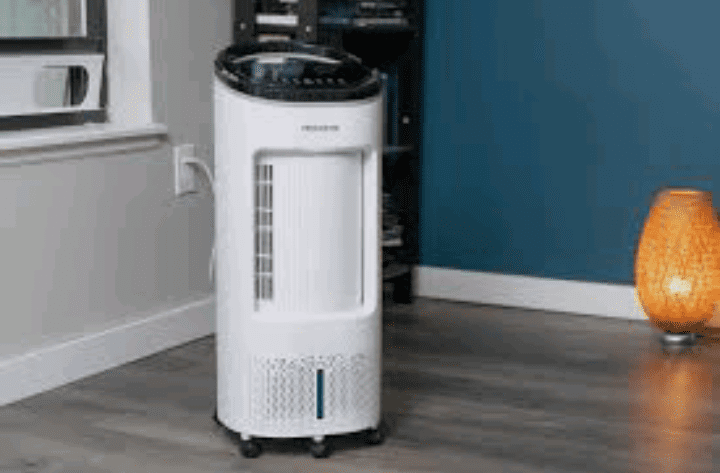DIY Swamp Cooler: Beat the Heat with Your Own Cool Creation
As the sun relentlessly cranks up the temperature, finding affordable ways to keep cool becomes a top priority. Enter the world of DIY swamp coolers – a simple, ingenious solution to the scorching summer heat. In this article, we’ll explore how to create your very own cooling oasis using common materials and a touch of DIY magic.
A DIY swamp cooler is like your personal superhero against the sweltering weather. Imagine a device that not only cools your space but does so without burning a hole in your wallet. That’s the beauty of the swamp cooler – it’s a budget-friendly, eco-conscious alternative to traditional air conditioning.
No need for fancy gadgets or complicated machinery; just a few basic components, some creativity, and you’ll be on your way to enjoying a cooler, more comfortable living environment.
But how does it work? Picture this: a fan, some water, and a bit of science. The DIY swamp cooler operates on the principle of evaporation, mimicking the refreshing coolness you feel when a breeze sweeps across damp skin. By harnessing this natural process, you can transform everyday materials into a cooling system that rivals the effectiveness of expensive air conditioners.
Whether you’re a seasoned DIY enthusiast or someone just starting to dip their toes into the world of home projects, building a swamp cooler is an accessible and educational endeavor.
In the following sections, we’ll guide you through the process, from understanding the science behind swamp coolers to gathering the materials and step-by-step instructions for creating your personalized oasis of cool comfort. So, let’s roll up our sleeves, grab our tools, and embark on the journey to beat the heat with a DIY swamp cooler.
Read also: DIY Face Masks: Unveiling the Art of Crafting Natural Skincare Solutions
DIY Swamp Cooler

I. Understanding the Science of Swamp Coolers:
Before going into the nitty-gritty of building a DIY swamp cooler, it’s essential to understand the science behind this ingenious cooling method. Swamp coolers, also known as evaporative coolers, work on the principle of evaporation.
When water evaporates, it absorbs heat from the surrounding air, causing the temperature to drop. In a swamp cooler, a fan draws warm air through water-saturated pads, where the water evaporates, leaving cool, moist air to be circulated into the living space. This process mimics the natural cooling effect you might feel on a hot day when a breeze passes over damp skin.
II. Materials Needed for DIY Swamp Cooler:
- Fan: The heart of any swamp cooler is a powerful fan. Choose a fan size that suits your space and energy preferences. Larger fans can cool bigger areas but may consume more electricity.
- Water Pump: A submersible water pump is essential for circulating water through the system. Make sure to select a pump with adjustable flow settings for better control.
- Water Reservoir: Any container that can hold water can serve as a reservoir. Consider the size of the space you want to cool when choosing the reservoir’s capacity.
- Cooling Pads: Cooling pads are where the magic happens. Choose high-quality pads that are designed for evaporative cooling to ensure optimal performance.
- Water Distribution System: PVC pipes and fittings are commonly used to create a water distribution system. Ensure that water is evenly distributed over the cooling pads.
- Float Valve: To maintain a consistent water level in the reservoir, use a float valve that automatically controls the water flow.
- Frame and Housing: Build a sturdy frame to support the components and house the entire system. Plywood or PVC can be used to create a durable structure.
Read also: 7 Challenges of Business Growth
III. Building Your DIY Swamp Cooler:
Now that you’ve gathered all the necessary materials, let’s dive into the step-by-step process of building your own swamp cooler:
Step 1: Design and Plan
Begin by sketching a design for your swamp cooler, considering the placement of the fan, water reservoir, and cooling pads. Plan the dimensions based on your space and the chosen fan size.
Step 2: Build the Frame
Construct a sturdy frame using plywood or PVC pipes. This will provide support for the fan, water reservoir, and other components. Ensure the frame is stable and can withstand the weight of the system.
Step 3: Install the Fan
Attach the fan securely to the frame. Position it so that it can draw air through the cooling pads effectively. Consider using brackets or straps to keep the fan in place.
Step 4: Set Up the Water Reservoir
Place the water reservoir at the base of the frame. Connect the submersible water pump to the reservoir, ensuring it’s fully submerged. Use a float valve to regulate the water level.
Step 5: Create the Water Distribution System
Use PVC pipes and fittings to create a system for distributing water over the cooling pads. Position the pipes so that water evenly flows through the pads when the pump is activated.
Step 6: Install the Cooling Pads
Attach the cooling pads to the frame, ensuring they cover the entire intake area of the fan. These pads should be kept wet to facilitate the evaporative cooling process.
Step 7: Connect and Test the System
Connect the fan, water pump, and any electrical components. Fill the water reservoir and turn on the system. Monitor its performance, adjusting the water flow and fan speed as needed.
Step 8: Fine-Tune for Efficiency
Experiment with the system to optimize its efficiency. Consider adding a timer to control when the swamp cooler operates or integrating a thermostat for automatic temperature regulation.
IV. Examples of Successful DIY Swamp Cooler Projects:
- The Backyard Breeze Machine: James, an avid DIY enthusiast, transformed an old wooden cart into a portable swamp cooler for his backyard gatherings. Equipped with a small fan and a modest water reservoir, this project became the centerpiece of his summer barbecues.
- The Apartment-Friendly Cooler: Sarah, living in a small apartment with limited space, designed a compact swamp cooler using a tabletop fan and a plastic storage bin as the water reservoir. The DIY cooler effectively cooled her living room without taking up valuable floor space.
- The Solar-Powered Oasis: Mark, a sustainability advocate, integrated solar panels into his swamp cooler design, making it an energy-efficient and eco-friendly cooling solution. The solar-powered swamp cooler effectively cooled his off-grid cabin without relying on the electrical grid.
V. Benefits and Considerations of DIY Swamp Coolers:
- Cost-Effective Cooling: One of the primary advantages of DIY swamp coolers is their affordability. The materials are relatively inexpensive, and the operational costs are significantly lower than traditional air conditioning.
- Environmentally Friendly: Swamp coolers use the natural process of evaporation, consuming less energy compared to air conditioners. Additionally, they don’t rely on refrigerants that can harm the environment.
- Adaptability: DIY swamp coolers can be customized to fit various spaces and needs. Whether you live in a small apartment or a spacious house, you can adjust the size and capacity of your swamp cooler accordingly.
- Educational Experience: Building a swamp cooler from scratch provides a valuable learning experience. It allows individuals to gain insights into thermodynamics, fluid dynamics, and basic engineering principles.
- Local Climate Considerations: While swamp coolers are highly effective in dry climates, they may not perform as well in areas with high humidity. It’s essential to consider the local climate when deciding whether a swamp cooler is the right cooling solution for your space.
Read also: Biomedical Waste Recycling and Reuse Process




